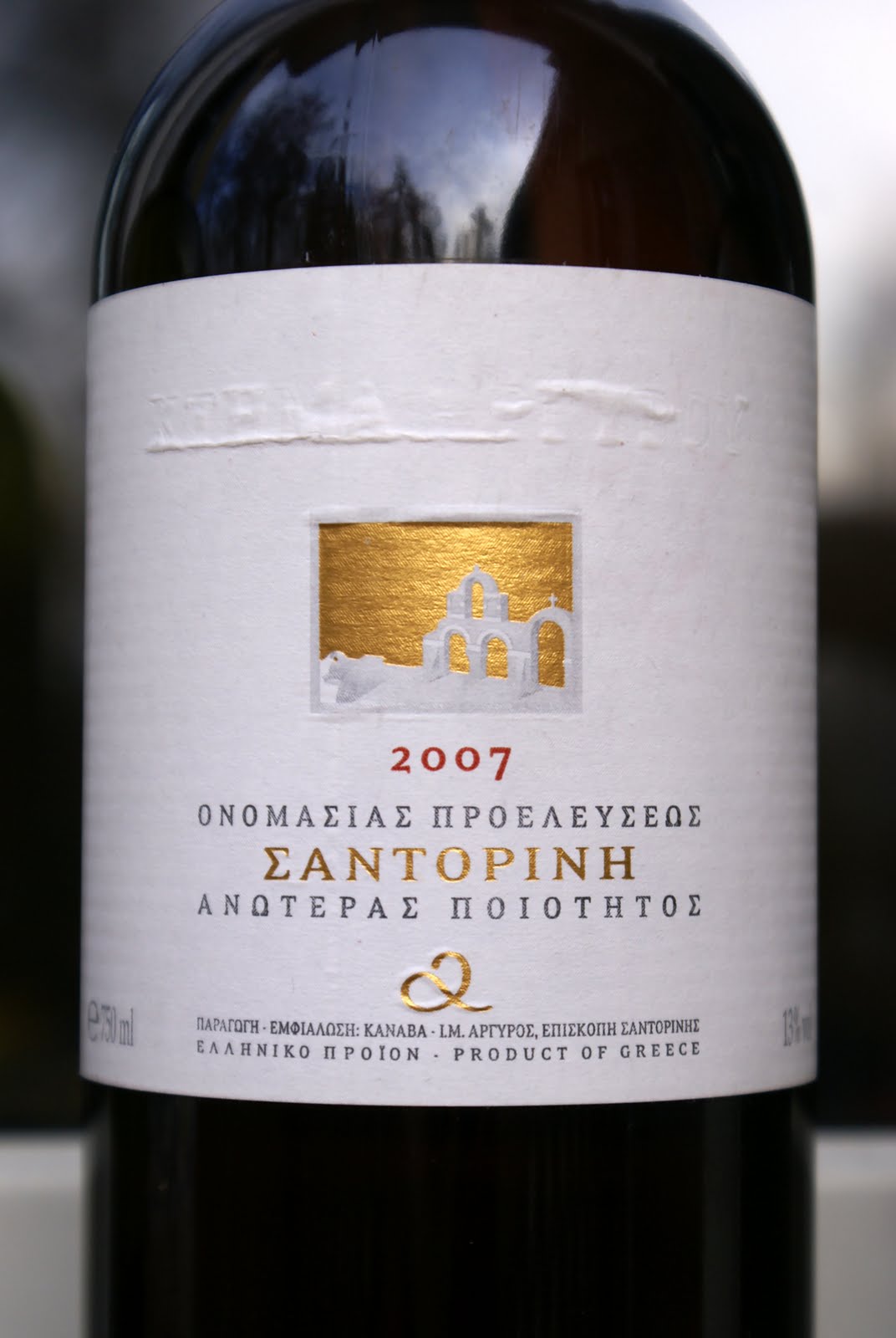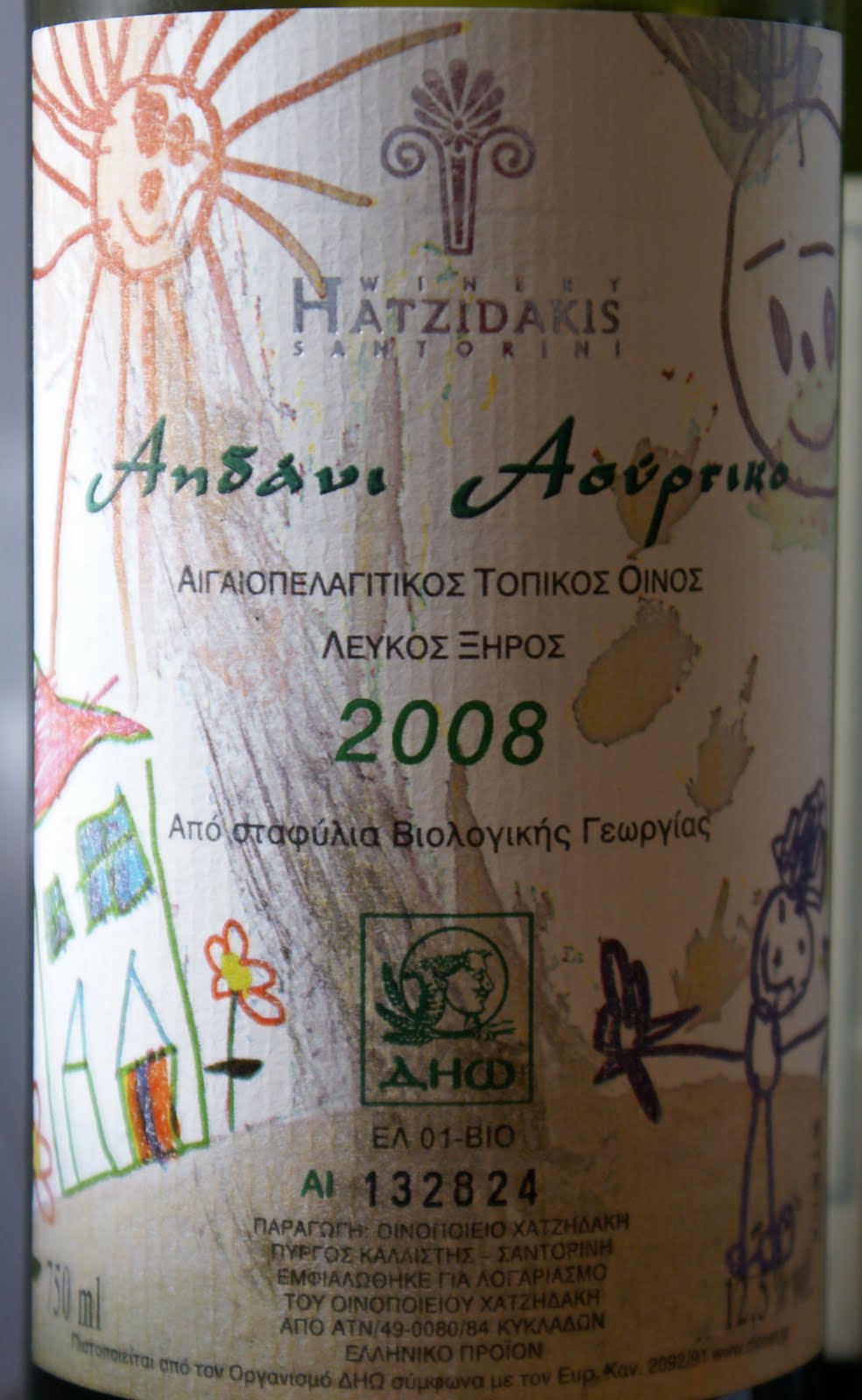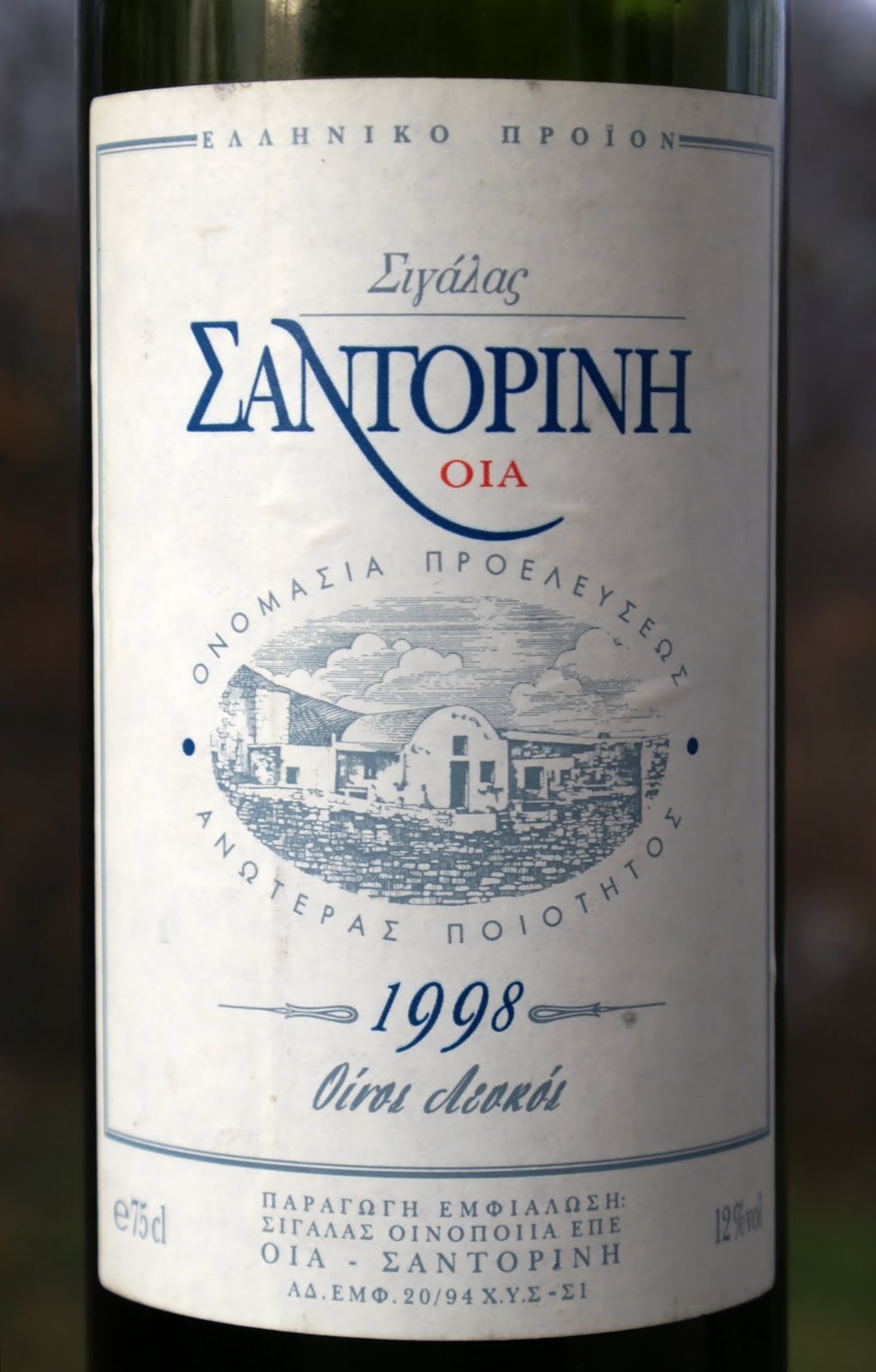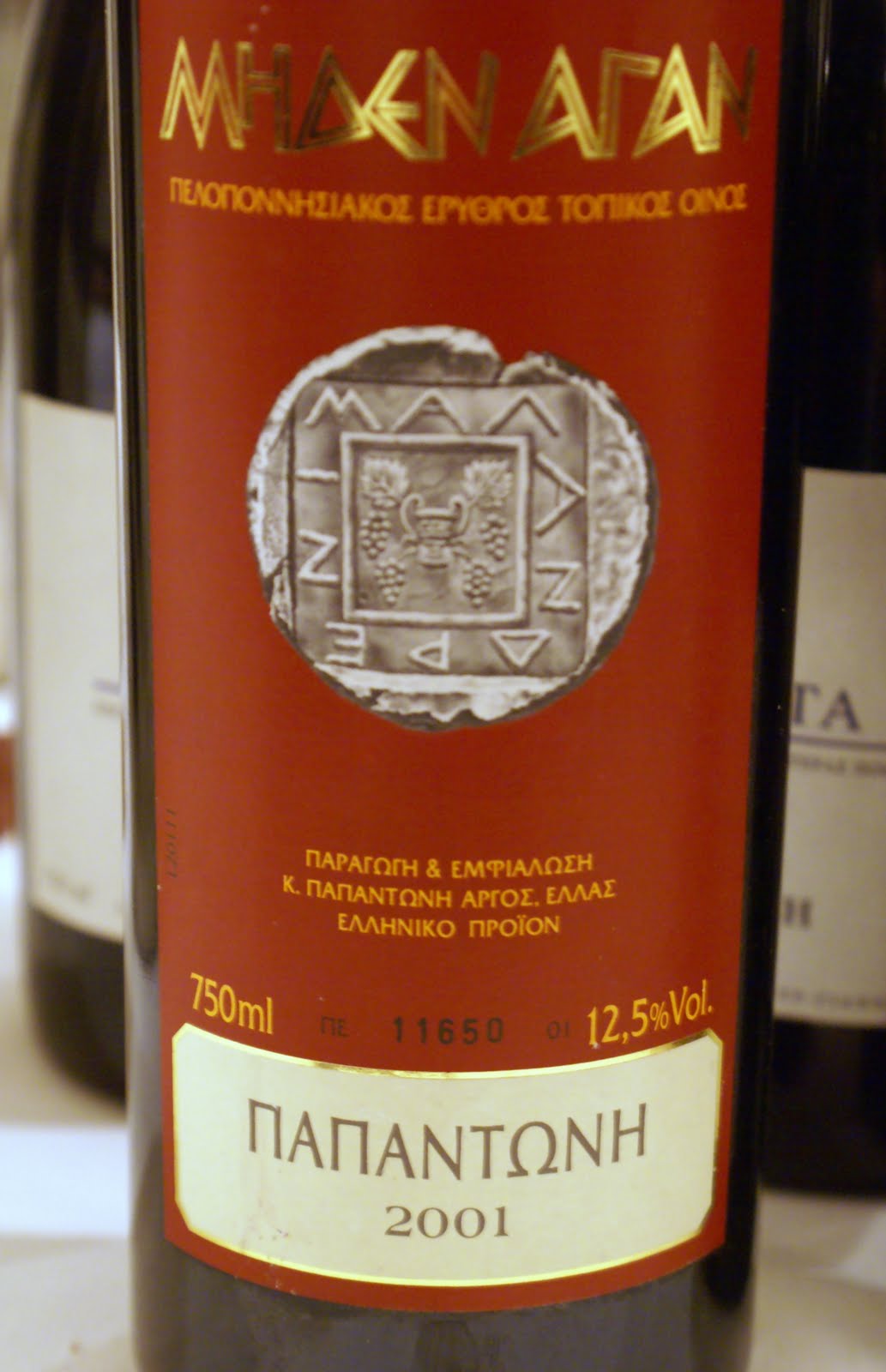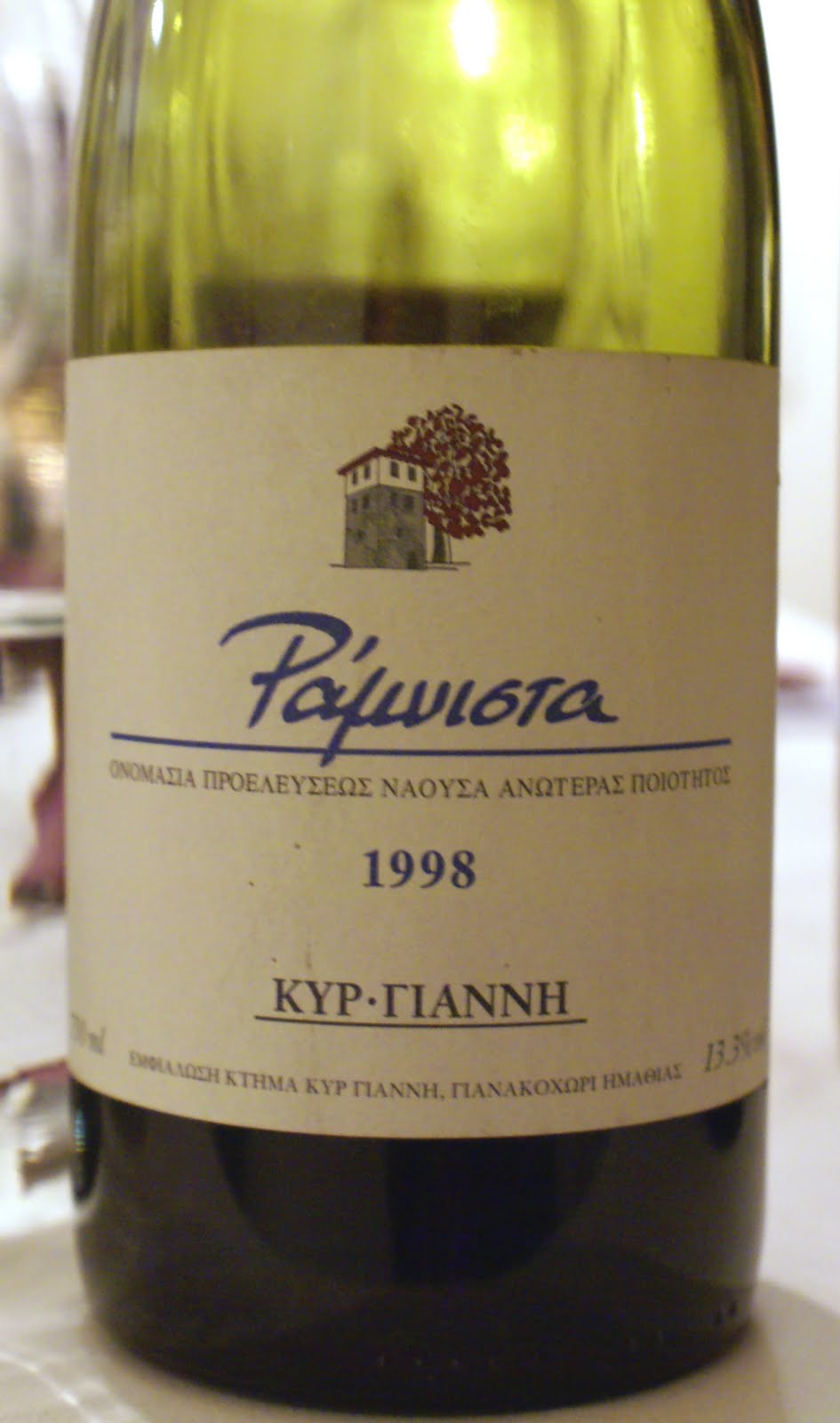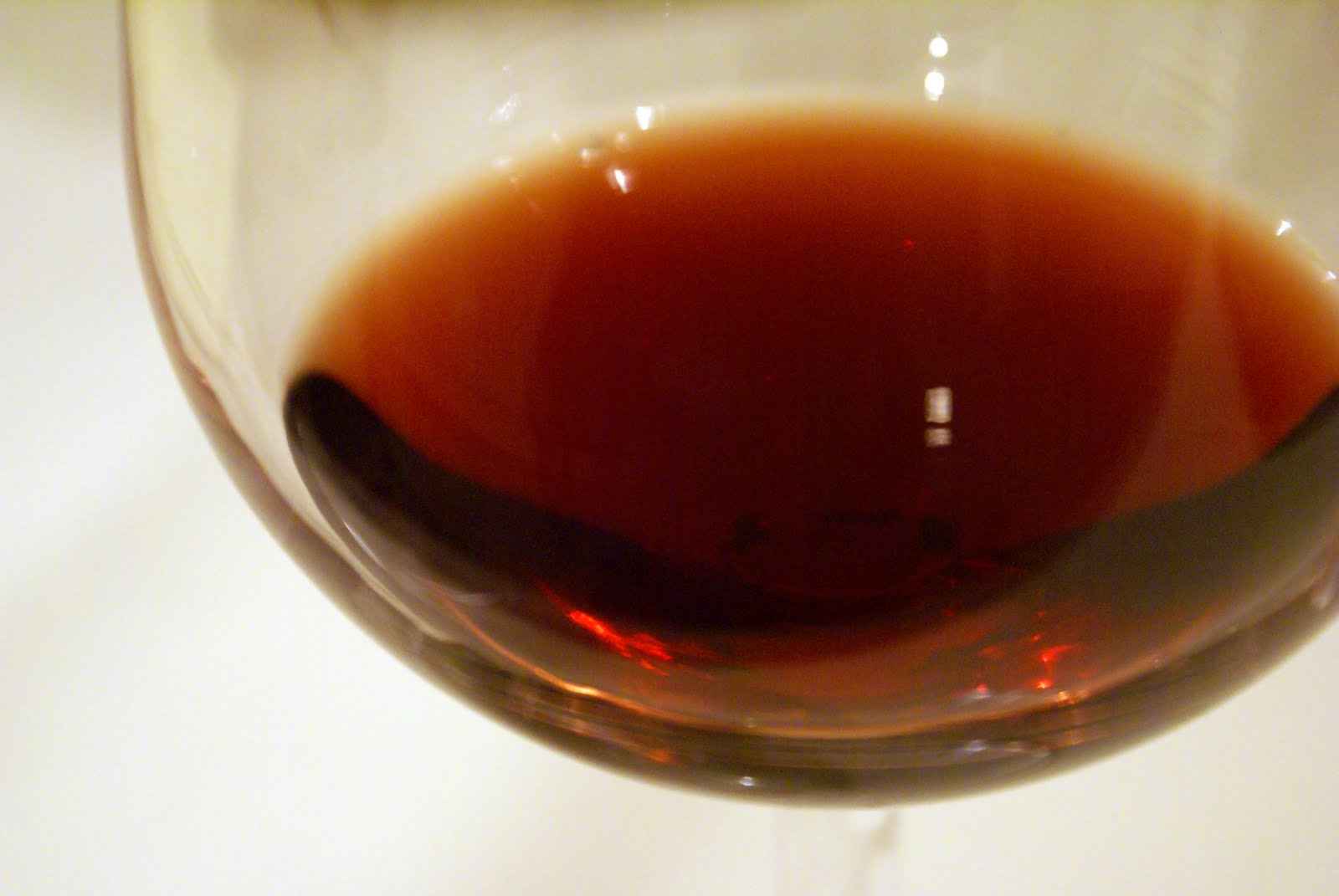Wine’s best kept secrets
On the white wine front, we’ve compared 2008s and 2007s from the four leading estates on the volcanic island of Santorini. There’s some (slowly) growing buzz about this vineyard location that surely belongs to the world’s most unusual and interesting. The partly submerged caldera of an extinct volcano, Santorini hosts some 1,000 hectares of vineyards on its lava rock soils. Unusual vineyards: the sweeping winds of the Aegean Sea mean that bush vines are pruned to grow in the shape of a basket, and often individually protected by low stone walls. Beautiful to photograph, back-breaking to work, yielding what are perhaps this planet’s most mineral wines.
Ktíma Gaía (ktíma is Greek for estate, so the name can be translated into Gaia Estate) harvest their grapes early and make a light- to medium-bodied, driven, seafoody, positively greenish style of Santorini: in lesser vintages like the Thalassítis 2008 the wine is quite simple but representative with good minerality and drinkability; Thalassítis 2007 adds a layer of saline complexity and a hint of evolutive toastiness (but showed a less than satisfactory evolution in the glass). (Thalassítis, interestingly, is an Ancient Greek term that denoted wines with seawater added as a conservative!). Ktíma Arghyroú is famous for its sweet vinsanto made of grapes dried on the sun (a local speciality) and aged for a decade in cask, but has been improving its dry wines too in recent years. The Santorini Assýrtiko 2008 is more or less in the style of the Gaia but more spontaneous and mineral, though the hot vintage’s limitations are obvious. The Santorini Ktíma Arghyroú 2007 (partly oaked) was the best 2007 tasted, a very exciting wine with plenty of mineral volcanic presence and some outstanding architecture in mouth; it’s a modern interpretation of Santorini that manages to tell much about the terroir as well. Santorini Varéli [=oak] 2003 is a big wine: I’m not so fond of the oaked Santorinis when they are young but with 5 or 6 years, minerality reemerges from underneath the oak and these can often be majestically powerful wines with honeyed-herby complexity and big structure. It’s the case here.
Haridímos Hatzidákis farms his vineyards biodynamically and has a penchant for late harvesting: his top cuvée Nichtéri (another traditional term: in Antiquity, nichteri wines were night-picked and crushed in fists for more elegance) often goes beyond 15%. I was looking forward to tasting the pre-phylloxera ‘Cuvée 17’ 2007 but it was corked (hinting at Hatzidákis’ broad, phenolic, alcoholic, less acid-driven style). We didn’t try the main estate label but the cheaper Aïdáni–Assýrtiko 2008 was one bold skin-contact white with plenty of power and mineral expression while retaining a nice natural balance and juiciness (it’s 12.5%: admirable self-restraint for this estate).
Many people’s (including mine) favourite estate on Santorini is that of French-trained Páris Sigálas. He manages to combine Hatzidákis uncompromised mineral expression with Gaía’s crisp juiciness, moderate alcohol, and no oak (in the main cuvée; there is also a Varéli). The 2007, in my recent tastings consistently one of the major Santorini successes of the decade, was underwhelming in this showing with some nice minerality but also hot alcohol (yet it’s only 13%), toastiness, and a stale sunflower oil edge too; clearly this wasn’t a perfect bottle. And the Santorini Varéli 2008 was as oaky, creamy, honeyed, unmineral, sweet-fruity as these young oaked Santorinis get. Revisit in 2015. But Sigálas stole the show anyway with a stunning Santorini 1998, a very evolved wine with an almost vin jaune-like (others said madeira) oxidation but so much stoney mineral austerity on the palate it told you more about geology than a term at university. An unusual, challenging but eminently enriching wine that shows where Santorini belongs in the wine world: at the absolute top.
We’ve also tried two wines from western Crete from the Manousákis estate: the red Nóstos 2005 (a Rhône blend) was tasting un-Greek and lifeless with rich low-acid fruit but little poise and slightly too much oak, but the Roussanne 2008 while oaky also has excellent acidity and minerality, impressive substance and length. Give it five years and it should prove a big bottle.
On the red wine front, I contributed a bottle of Papantónis Meden Agan 2001, a 100% Aghiorghítiko grape from the Neméa appellation on the Peloponnese, one of my favourite Greek wines. Skillfully vinified in the modern French style by owner Antónis Papantónis, it is a Mediterranean red with real sense of balance and elegance, slowly evolving but retaining a freshness that both makes it a jewel at the dining table and promises another 8–10 years of development. Meden Agan is produced in reasonable quantities and ridiculously affordable at 10€.
10€ is also the price of Ktíma Kir-YiánniNáoussa Rámnista, the ‘Barolo of Greece’ as I like to nickname it. Thegeographical and stylistic opposite of Meden Agan, it originates fromthe high hills of western Greek Macedonia, and more specifically theAOC Náoussa where the king is Xynómavro: a pale-coloured, high-acid,high-tannin grape capable of otherworldly finesse. Rámnista (asingle-vineyard oak-aged Náoussa) ages as well as a Barolo, too: the1998 was a little murky on the nose at first but then opening towardsspring flowers and redcurrants; a fully resolved palate gaining floweryelegance with airing; still tannic to continue for a few years. The1995 is now almost à point showing an outstanding quality to the deftlypolished, mineral, crystal-clear tannins, and a miraculous petitsfruits rouges elegance on the nose. If someone has negative stereotypesagainst Greek wines I guess they’d be stunned to taste this anddiscover what it is.
The wine of the night award goes to the Rámnista 2001, however. Combining the characteristics of the 1998 and 1995 above, it adds some impressive power and chocolatey richness on the palate, and is at its best with half an hour in the glass. Supreme elegance, iron-cast structure, regal fruit and big ageing potential: Rámnista is positively Europe’s greatest red-wine bargain.


